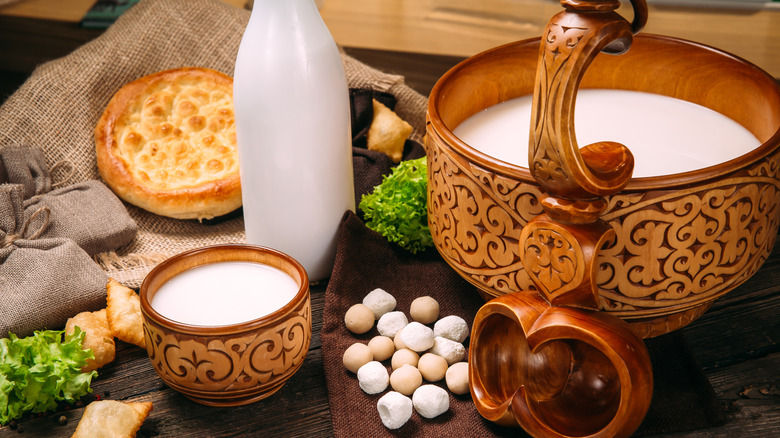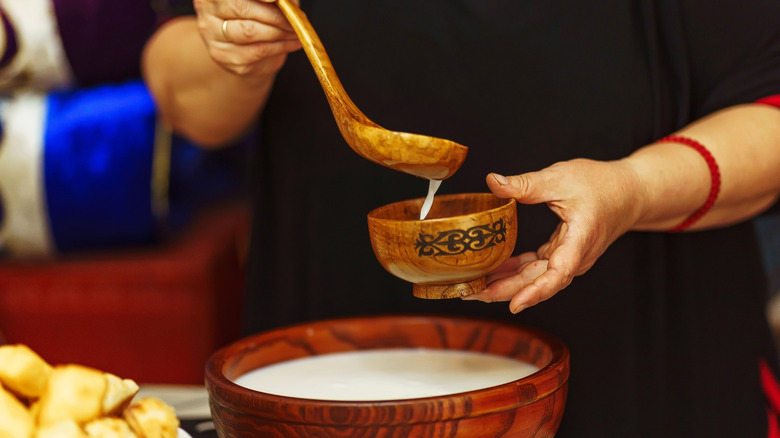Kumis: The Unexpected Dairy Drink Lactose-Intolerant People Can Enjoy
There are tons of fermented foods to know, but the lactose-intolerant dairy-loving folks in search of a drink that doesn't cause multiple bathroom trips might want to get acquainted with kumis, an ancient fermented drink. Kumis, otherwise known as koumiss, is made from fermented mare's milk. It is consumed in Central Asian countries and certain parts of East Asia (especially in Mongolia) where horses are such an integral part of the nomadic culture. While mare's milk isn't best consumed raw due to its serious laxative nature, the fermented version has taken the spotlight for centuries and become embedded in cultures and cuisines far and wide.
The process of preparing kumis milk involves lactic acid fermentation. While mare's milk has more lactose (sugar) than regular cow's milk, the fermentation breaks it down — this is also why this drink is alcoholic as the sugar converts into ethanol. As it ferments, the lactose is turned into lactic acid, carbon dioxide, and ethanol. Fortunately, the drink isn't boozy enough to worry about the alcohol content. This process takes roughly between three to eight hours.
The foamy appearance and distinct taste of kumis are down to that very starter culture: lactic acid bacteria and yeasts. And yes, fermentation almost completely removes the lactose, which is very different than how lactose-free milk is really made. Kumis is also similar to kefir in many ways, except that it begins as a liquid base rather than kefir grains (solid bacteria and yeast). Unfortunately, kumis may be tricky to find in your local store — those who crave dairy may have to stick to cheeses that are naturally lactose free and your favorite non-dairy ice cream.
How to enjoy kumis
The taste of kumis varies depending on the region, how warm or temperate the weather is, and the process of fermentation. Sour and bubbly don't usually go together, but with fermented horse milk, they're a natural pair. Since it is classed as an alcoholic beverage, you can expect a tinge of a subtle alcoholic aftertaste too. Kumis is also served in its 'softer' version, which is a slightly less strong-tasting drink that's blended with fresh mare milk. Yes, it's still sour and alcoholic, but less so.
Traditionally, kumis is served in a small wooden bowl, is drunk cupped with both hands, and is usually offered by a host for travelers and those visiting. Especially in Mongolia, you may be expected to share the bowl with everyone else who is dining, each person taking a sip and passing it to the next.
You may also come across it in holy festivities in Mongolia and beyond. Mainly offered in Central Asia, kumis is found as far west as Russian supermarkets. In parts of North America and Europe — like Colombia, Austria, and Germany — you can find kumis or a similar drink made with bovine milk.


